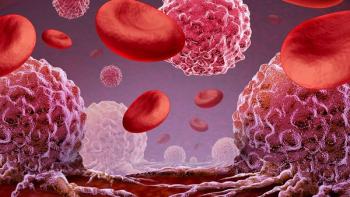
After a Slow Start, Anti-Cancer Vaccine Research Shows High Potential for Treating Patients
Key Takeaways
- Anticancer vaccines have struggled commercially, but research continues with promising candidates like PROSTVAC and AGS-003 in advanced trials.
- Combining vaccines with immune checkpoint inhibitors may enhance efficacy, as vaccines can generate an immune response spark.
At least 10 vaccine candidates have entered advanced testing phases on the strength of impressive early stage results.
Anticancer vaccines have had a shaky start. The only therapeutic cancer vaccine ever to win approval from the Food and Drug Administration (FDA) was a financial failure, plunging the company that developed it into bankruptcy proceedings.
Every other vaccine to make it through phase 3 trials thus far has failed to reach statistically significant benchmarks for documenting therapeutic benefit. Indeed, just last year, two major pharmaceutical companies announced that once-promising therapeutic cancer vaccines had faltered in costly late-stage trials.
At least 10 vaccine candidates have entered advanced testing phases on the strength of impressive early stage results (see table). Notably, the FDA is reviewing an application for the oncolytic immunotherapy agent talimogene laherparepvec (T-VEC) for the treatment of patients with regionally or distantly metastatic melanoma, with a decision expected by late July.
In addition, the agency has granted breakthrough therapy status to the combination of the vaccines CRS-207 and GVAX Pancreas in metastatic pancreatic cancer. In research circles, the belief that vaccines may work better in combination with other treatments than they do as monotherapies has stimulated a new line of study.
Although there is a significant scientific rationale for targeting the PI3K pathway in breast cancer, research findings presented recently at the 2014 San Antonio Breast Cancer Symposium (SABCS) highlight the inherent complexities in using agents directed at this cell-signaling network. Given the extensive heterogeneity of breast cancer, the identification of patients most likely to respond to these drugs is becoming increasingly pressing and challenging.
“Sipuleucel-T [Provenge] has failed from a financial point of view so far, but its monetary struggles haven’t diminished interest in cancer vaccines,” says Philip W.Kantoff, MD, a Harvard Medical School professor who heads the Department of Solid Tumor Oncology at Dana-Farber Cancer Institute.
“To the contrary, its very existence has stimulated research and trials because it is proof positive that a long-held concept can produce real world benefits. It is a building block, and there are a number of experimental vaccines out there that may take the next step,” says Kantoff, who helped lead the clinical trial that prompted the FDA to approve Provenge in 2010 as monotherapy for asymptomatic or minimally symptomatic metastatic castrate-resistant prostate cancer. Despite the excitement that accompanied the drug’s launch, Dendreon Corporation has not been able to translate the pioneering autologous dendritic cell vaccine into commercial success and filed a voluntary bankruptcy petition in November 2014.
Therapeutic cancer vaccines currently in development fall into four main categories, depending upon the strategy employed, according to the Society for the Immunotherapy of Cancer. These approaches include autologous tumor cell vaccines, peptide vaccines, dendritic or antigen-presenting cell vaccines and vector-based vaccines.
[Read “
Currently, Kantoff is helping to conduct a phase 3 trial for another vaccine candidate that researchers have been watching: the prostate cancer vaccine PROSTVAC. The experimental treatment uses seven injections spaced across five months to stimulate an immune response against prostate specific antigen (PSA). The initial priming dose combines a modified version of Vaccinia with PSA and three molecules designed to stimulate the immune system: LFA-3, ICAM-1 and B7.1. The six booster shots pack the same mix of PSA and immune system stimulants into a modified fowlpox vaccine.
Trials to date have deployed the experimental vaccine regimen after tumors have become resistant to chemical castration and started to metastasize, but before the patients have been treated with chemotherapy.
“Nothing guarantees success in phase 3 trials, but those numbers certainly constitute compelling preliminary data, and they come from monotherapy trials that may not play to the vaccine’s real strength,” says James L. Gulley, an immunotherapy expert at the National Institutes of Health.
Seeking Effective Combinations
Gulley, who is chief of the Genitourinary Malignancies Branch of the National Cancer Institute’s Center for Cancer Research, believes PROSTVAC and other vaccines may perform far better in combination with other treatments than they perform as monotherapy. Medications designed to inhibit immune checkpoints such as PD-1 and PD-L1 appear to be a particularly good match for vaccines, Gully says.
“The basic idea of checkpoint inhibitors is to increase the effect of natural immune response by reducing barriers to that response,” says Gulley, who helped develop PROSTVAC.
“Unfortunately, roughly 70 percent of patients don’t get an objective response from checkpoint inhibitors as monotherapy and we think that’s because their immune systems never develop any underlying inclination to attack their tumors. Adding the checkpoint inhibitors is like dousing their tumors with gas, so to speak, but their immune systems aren’t producing the spark needed to light it.
“Vaccines can generate the spark,” Gulley continues. “They train your body to attack antigens."
Combining them with medications that inhibit immune checkpoints should produce very powerful responses in a high percentage of patients. “It’s just a theory now, but it’s an exciting enough theory that people are already starting to test it.”
Traditional vaccines take advantage of the immune system’s natural tendency to recognize and attack the foreign antigens associated with contagious diseases. Harmless proxies for actual diseases teach the immune system what to look for and how to beat it. When actual infection occurs, the immune system destroys it immediately. Therapeutic cancer vaccines, on the other hand, naturally face an uphill fight because they attempt to make the immune system overcome safeguards that prevent the body from attacking itself.
PSA, for example, is an antigen that naturally occurs inside the human body. Immune cells that would respond with extreme suspicion to antigens produced by polio or influenza, for example, would not recognize PSA.
No simple injection of PSA or any other naturally occurring antigen will overcome this tendency toward benign neglect and teach the body to attack such a self-antigen at the source. Indeed, for many years, it seemed that no injection of any kind would be effective.
Researchers spent years trying different combination of tumors, viruses, bacteria, immune system stimulants and antigens before they found combinations that produced anything close to a satisfactory immune response.
Gulley and his colleagues worked for more than a decade to create the current formulation of PROSTVAC, which teaches the immune system to attack PSA by making it the common element between the vaccinia in the priming injection and the fowlpox in the booster shots.
Targeting Tumor Antigens
Of course, tumors only occur when normal human genes mutate, so most tumors do produce at least a few antigens that do not typically occur inside the human body, and researchers have designed vaccines that target these quasi-foreign antigens. Such efforts face obstacles of their own, but a number of therapeutic cancer vaccinations that target quasi-foreign antigens are making their way toward the market.
AGS-003, for example, is currently undergoing a phase 3 trial testing its efficacy against metastatic renal cell carcinoma (mRCC) in about 450 patients. The experimental treatment trains the immune system to attack antigens created by tumor RNA—antigens that are not normally produced in the human body and thus not protected by the body’s hesitancy to attack self-antigens. The exact target varies from patient to patient. Indeed, the treatment itself varies. Customized treatments are created using small tumor samples obtained via nephrectomy or surgical removal of metastases and co-electroporating dendritic cells from these samples with autologous tumor RNA and CD40L RNA.
Patients then receive five doses a week for the first three weeks and a single booster shot every 12 weeks thereafter. All told, it takes more than 2 months from the initial biopsy to the first sign of efficacy, but results from early-stage trials indicate that it may be a good option for patients with a longer life expectancy. The combination of AGS-003 plus Sutent (sunitinib) was associated with median overall survival times that were dramatically higher than those that have been reported in single-agent trials of Sutent and other targeted therapies in patients with poor-risk, intermediate mRCC.
Also, like nearly all other therapeutic vaccines, AGS-003 appears to be extremely well tolerated. No serious adverse events were attributed to the therapy. The need to customize the vaccine for each user is an obvious drawback, a drawback that AGS-003 shares with other vaccines targeted at tumor-specific antigens.
The customization process gives the tumor four to six extra weeks to attack the body before treatment begins. It also increases financial costs. The exact cost of producing customized vaccines will, of course, vary with both the design of each vaccine and the scale of the manufacturing process. The only real-life example to date comes from Provenge, and that example suggests that manufacturing costs can make it difficult to generate profits. Off-the-shelf vaccines, on the other hand, can be produced in bulk. Indeed, Gulley noted, PROSTVAC is basically a sophisticated descendent of the Vaccinia vaccines that have protected billions of people around the world from smallpox at a cost that even the poorest nations have been able to afford. Although it seems unlikely that customized anticancer treatments will ever be as relatively inexpensive as traditional vaccines, AGS-003 and many genetically derived treatments may well offset production costs with dramatically lower development costs.
“Off-the-shelf vaccines target specific antigens associated with specific conditions. You can’t vaccinate against polio by giving someone a flu shot, and you probably cannot treat lung cancer with a vaccine that targets PSA. You need to develop a separate product for every separate condition,” says Robert A. Figlin, who holds the Steven Spielberg Family Chair in Hematology Oncology at Cedars-Sinai Medical Center in Los Angeles, has led trials of AGS- 003 and thinks that customized vaccines may be fundamentally different.
“The process by which tumor RNA is used to make AGS-003 for each patient is in no way specific to renal cell carcinoma. RNA is RNA. The process should, in theory, work in exactly the same manner against all tumor types, so if phase III trials show the vaccine to work against this tumor type, the next obvious step is to test it against other tumor types,” Figlin says.
Built-in Disadvantage in Clinical Trials
AGS-003, like other therapeutic cancer vaccines, will face a difficult, uphill fight in those trials, regardless of what tumor type researchers pit it against. Indeed, the standard process for testing new cancer treatments evaluates vaccines at exactly the moment they’re least likely to succeed. More than a century of experience demonstrates that vaccines work best if patients receive them before contracting whatever disease they treat. The greater the amount of disease that patients have inside them when they receive a vaccination, the smaller the benefit the vaccine provides.
The smallpox and polio vaccines rank among the most effective medications of all time. They have saved untold millions from ever contracting horrible diseases. Yet neither does any good for a patient who already has a serious case of either disease, which means that neither would ever have been approved if regulators had evaluated them as they generally evaluate new cancer medications.
Patients who receive novel cancer treatments tend to have battle-hardened tumors that have already withstood other treatments. Their immune systems, moreover, tend to be weakened by both disease and the other treatments they have received.
Many trials are designed to give therapeutic cancer vaccines a better chance of success by administering them before chemotherapy; nevertheless, most patients who have received vaccines in trials to date already had advanced disease. It therefore comes as little surprise to some researchers that these early years of anticancer vaccine trials abound with apparent late-stage failures.
In 2014, Merck KGaA halted its development of the MUC1 antigen-specific tecemotide (L-BLP25), previously known as Stimuvax, in non—small cell lung cancer (NSCLC). GlaxoSmithKline canceled its plans for the peptide vaccine MAGE-A3 in NSCLC, although efforts to identify a subpopulation of melanoma patients who might benefit from the drug are continuing.
Experience with traditional vaccines suggests that cancer vaccines would work far better if patients receive them earlier, and experiments with cancer vaccines confirm this, at least in animals.
“If you vaccinate mice and then challenge them with cancer, they are very well protected, so we may, in fact, have the tools we need to prevent some types of cancer right now,” says Howard L. Kaufman, chief surgical officer at Rutgers Cancer Institute of New Jersey. Kaufman is president of the SITC and a leading investigator into T-VEC.
“Trouble is, no organization is going to test that hypothesis by funding trials that run more than a decade,” says Kaufman. “Financial reality demands short trials, which in turn demands late-stage patients, and if vaccines continue to fail frequently in such trials, investment will eventually ebb.”
Promising Vaccines Advance
For now, however, experimental immunotherapies are attracting interest, particularly for tumor types that have resisted more traditional treatment, and such interest has produced several vaccines that have entered phase 3 trials.
DCVax-L and rindopepimut, for example, have both provided dramatic benefits in early stage trials to patients with glioblastoma multiforme. In a trio of trials, more than 100 patients with EGFRvIII-positive glioblastoma achieved median survival times ranging from 20.4 months to 21.8 months, with three-year survival rates between 23 percent and 33 percent after receiving rindopepimut. Median survival time for comparable patients who receive the current standard of care is fewer than 15 months.
A smaller trial of DCVax-L, meanwhile, produced even more promising results. Researchers at UCLA gave DCVax, along with the normal standard of care, to 20 patients with newly diagnosed glioblastoma. Their tumors, on average, delayed recurrence for two full years—more than triple the usual time with normal treatment—and the median patient survival time of three years was 2.5 times the usual survival period.
Results like that tend to support the hypothesis that vaccines will work better in conjunction with other therapies than they do on their own. According to that hypothesis, any treatment that reduces disease load and thus gives a vaccine a chance to build resistance to the tumor is a candidate for combination therapy, so long as the treatment doesn’t also weaken the immune system.
Researchers are particularly excited about the idea of pairing vaccines with other types of immunotherapies.
“The challenge will be discovering which treatments work best in combination,” says Kaufman.
“We have far, far too many treatments to test anything more than a fraction of all the possible combinations in humans, so if we are to get the maximum possible benefit from the vaccines we develop, we’re going to need a reasonably reliable way to predict good combinations in advance. Absent any widespread agreement on how to formulate combinations, different organizations are using different systems, but a number of them are testing vaccines in combination with other therapies, and more trials are doubtless in the planning stage,” he says.
Such tumors typically respond poorly to most treatments, but early-stage PROSTVAC trials have succeeded. The treatment has at least doubled PSA-specific T-cells in more than half of all trial patients and extended overall survival by an average of 8.5 months.





